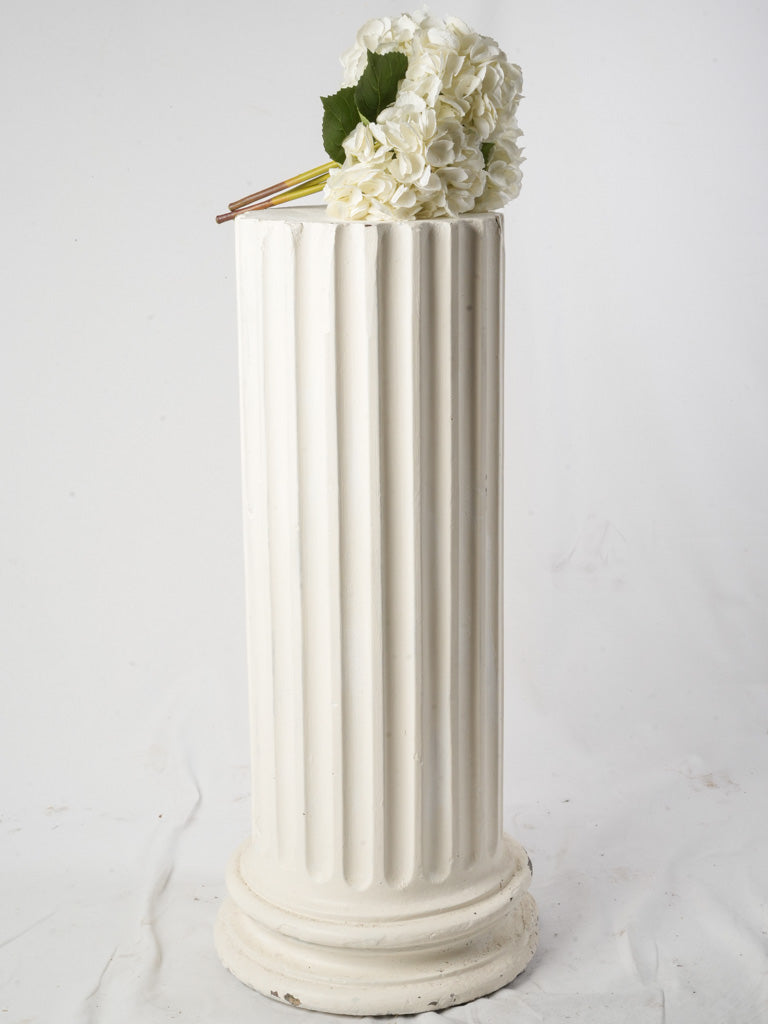
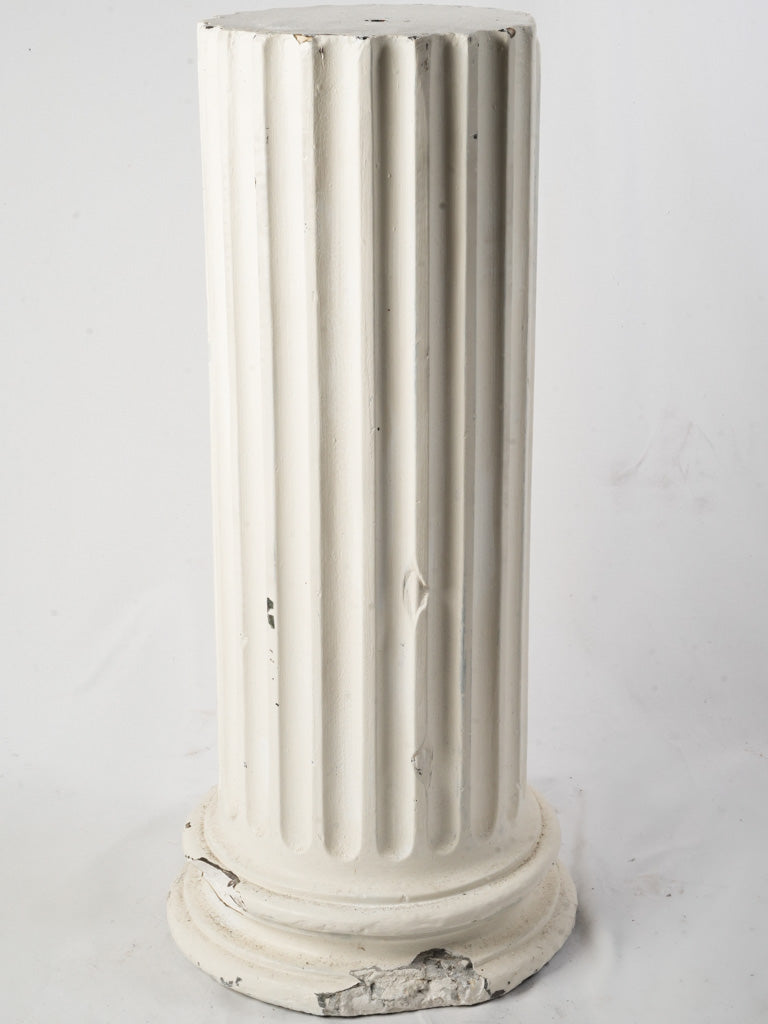
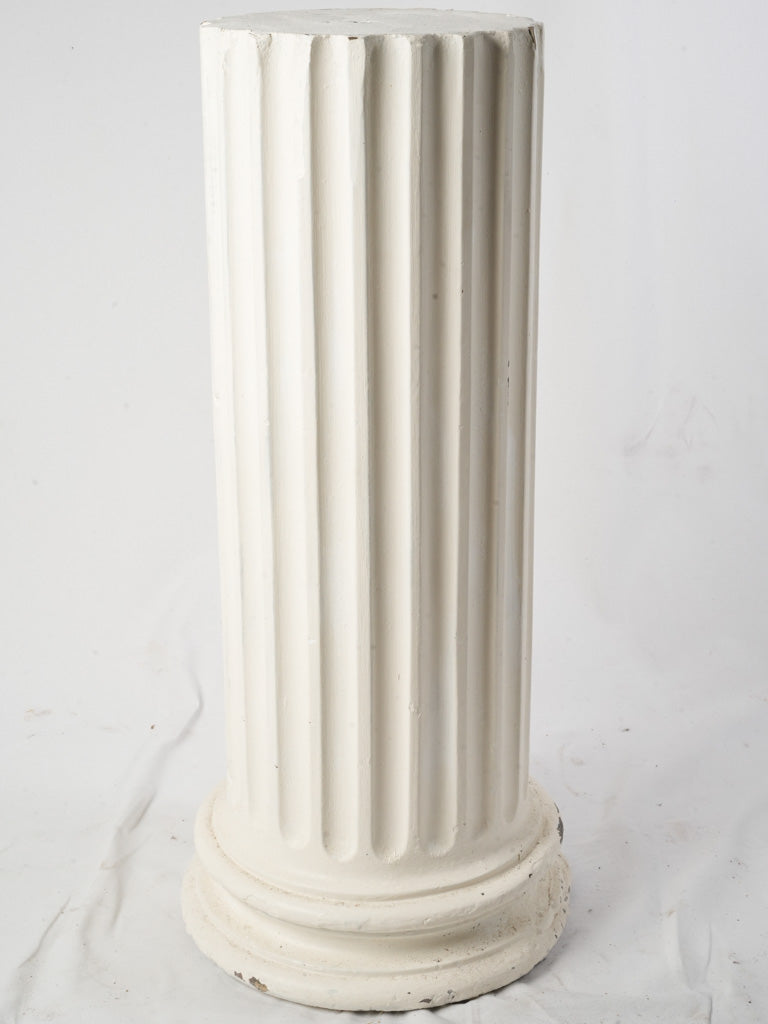


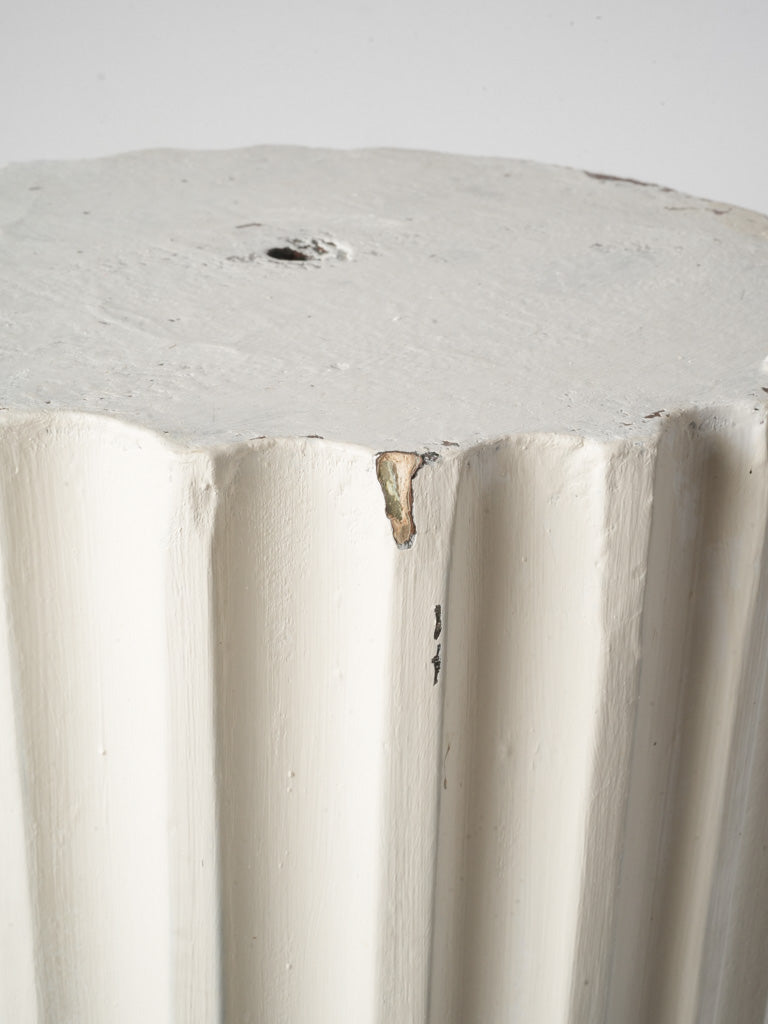


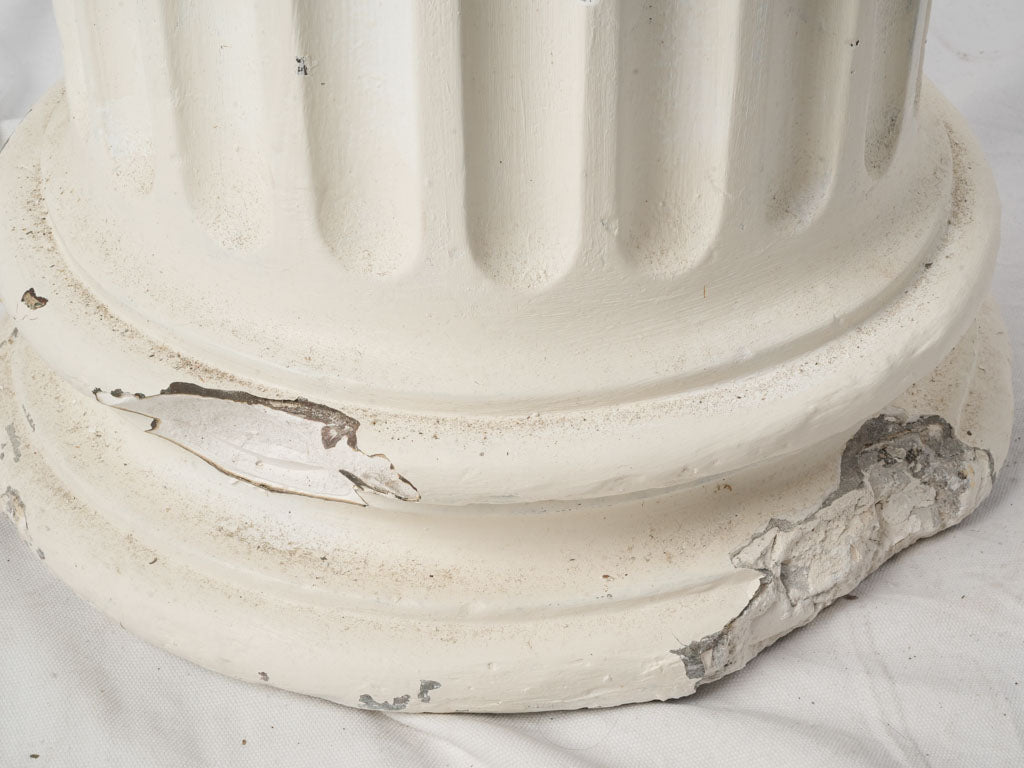
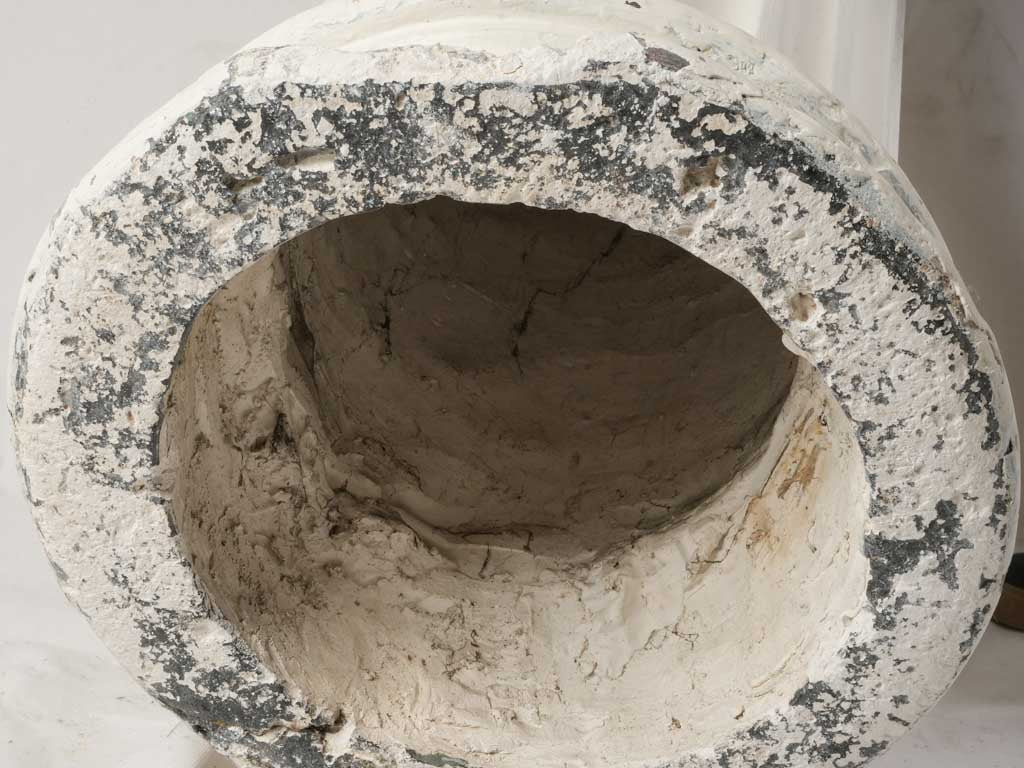
Early 20th Century French Neoclassical Plaster Fluted Column Pedestal - 38½"
All inclusive pricing to USA
The price includes duties, taxes, tariffs and shipping. No more to pay for destinations within the US.
This French painted plaster pedestal, early 20th century, is modeled as a truncated classical column. The medium-scale cylindrical shaft is deeply fluted and rises from a stepped circular plinth with torus moldings, terminating at a flat, cut top in place of a capital, evocative of antique ruins. Finished in a matte antique white to imitate marble, it carries a slightly whimsical, theatrical character. Losses to the base, scattered chips, and small abrasions to the paint contribute to its charmingly timeworn, ruinous aspect.
Such pedestals drew on the long neoclassical tradition that revived Greek and Roman forms for academic study and domestic display. The continuous fluting recalls the Doric and Ionic orders, while the intentionally truncated silhouette references archaeological fragments admired since the Grand Tour. In early 20th-century France, ateliers and decorative workshops produced plaster stands that emulated marble supports, marrying practicality with aesthetic refinement for presenting busts, bronzes, and vases in salons, studios, and shop windows.
This pedestal carries a whimsical, almost theatrical presence that makes it more than a simple support. In a minimalist interior, it can stand alone as a statement object, its ruin-inspired form reading as sculptural in its own right. Equally, it serves as a dramatic stage for a bust, a contemporary artwork, or a vase of flowers, its neutral white finish enhancing whatever it supports. Within a more eclectic, curated setting, it contributes to a layered, gallery-like composition, pairing naturally with gilded frames, stone fragments, or curiosities to evoke the spirit of a collected interior.
Condition and wear consistent with age and use.
Approx. overall 38½" high x 17¼" diameter
Approx. overall 98cm high x 44cm diameter
Choose options

